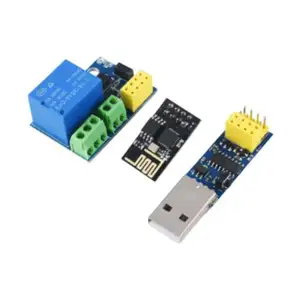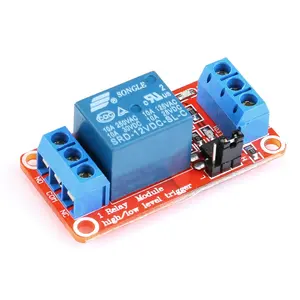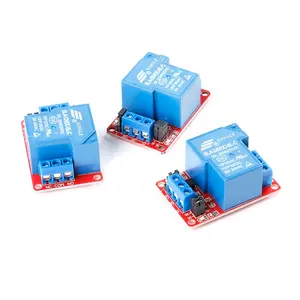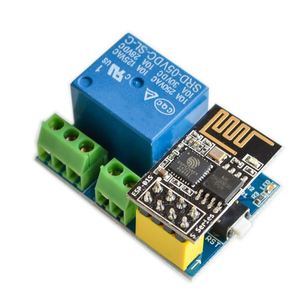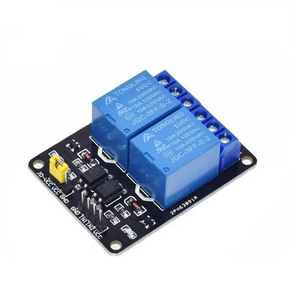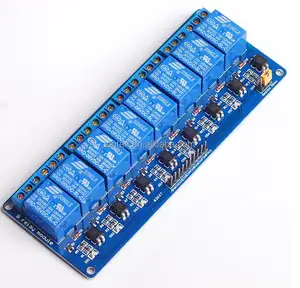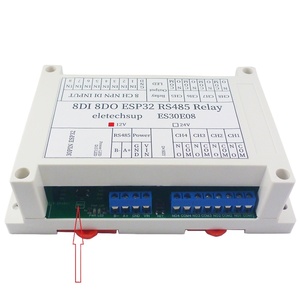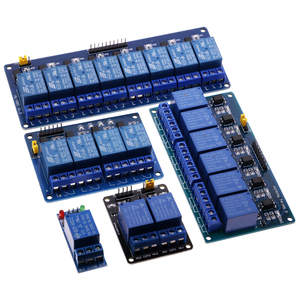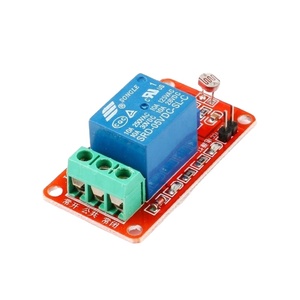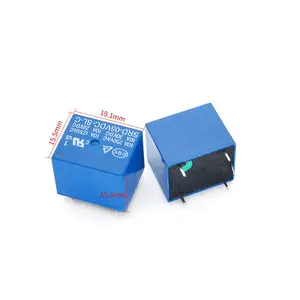Arduino Relay Module



 1/3
1/3







 1/2
1/2




 1/2
1/2





 1/4
1/4


 0
0




 1/3
1/3


 0
0



 1/3
1/3




 1/3
1/3





 1/2
1/2





 1/15
1/15









 1/3
1/3

 0
0
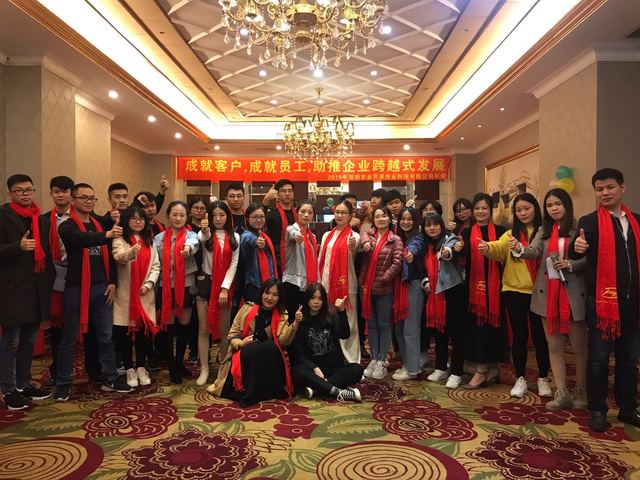

 1/3
1/3


 1/3
1/3

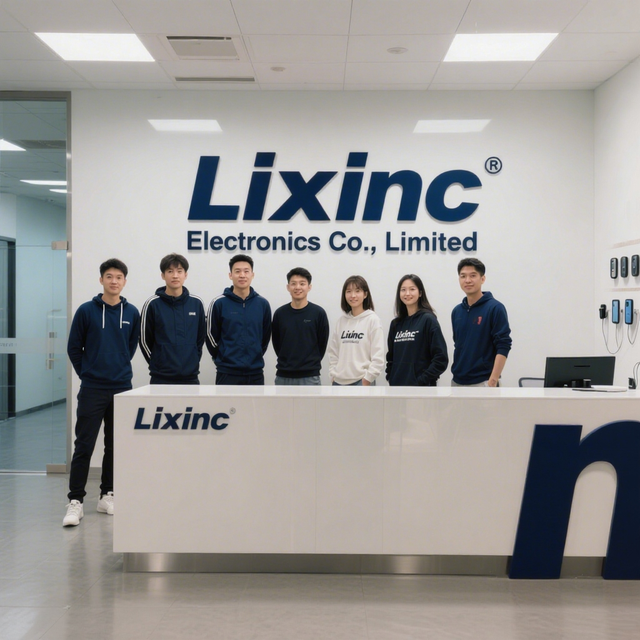
 1/1
1/1


 1/3
1/3





 1/4
1/4




 1/2
1/2
About arduino relay module
Where to Find Arduino Relay Module Suppliers?
China leads global production of electronic control components, with Shenzhen and Hangzhou emerging as key hubs for Arduino-compatible relay module manufacturing. Shenzhen’s electronics ecosystem—home to over 80% of China’s PCB and embedded systems suppliers—enables rapid prototyping and high-volume assembly through tightly integrated supply chains. Hangzhou complements this with specialized automation-focused manufacturers that integrate IoT-ready microcontrollers into relay systems, supporting smart home and industrial control applications.
These clusters offer operational efficiencies via co-located component sourcing, surface-mount technology (SMT) lines, and automated testing facilities. Suppliers benefit from localized access to passive components, connectors, and firmware programming services within 30km radii, reducing lead times by up to 40% compared to offshore alternatives. Buyers gain flexibility in order scale, with standard lead times averaging 15–25 days for batch orders and same-day dispatch available for pre-stocked configurations. Cost advantages range from 20–50% due to lower labor costs and vertical integration in PCB fabrication and final assembly.
How to Choose Arduino Relay Module Suppliers?
Evaluate potential partners using the following criteria:
Technical Capability Verification
Confirm compatibility with common microcontroller platforms (Arduino, ESP32, ESP8266) and support for both high- and low-level triggering. Modules should feature optocoupler isolation for signal integrity and protection against voltage spikes. Prioritize suppliers offering product variants across relay counts (1–16 channels), voltage ratings (5V, 12V, 24V), and communication interfaces (Wi-Fi, Ethernet).
Production & Quality Assurance
Assess supplier infrastructure based on the following indicators:
- In-house SMT and through-hole assembly lines for consistent board quality
- Functional testing protocols including continuity checks, coil resistance measurement, and cycle endurance validation
- Compliance with RoHS and CE standards for environmental safety and market access
Cross-reference online transaction data with on-time delivery performance (target ≥95%) and response time (ideally ≤2 hours) to gauge operational reliability.
Procurement & Risk Mitigation
Utilize secure payment mechanisms such as escrow services for initial orders. Request sample units to verify build quality, pinout accuracy, and firmware behavior under load conditions. For customization, confirm capability in labeling, packaging, and PCB revision control. Analyze reorder rates—values above 30% indicate strong customer satisfaction and product reliability.
What Are the Best Arduino Relay Module Suppliers?
| Company Name | Location | Main Products | Online Revenue | On-Time Delivery | Avg. Response | Reorder Rate | Customization | Min. Order |
|---|---|---|---|---|---|---|---|---|
| Hangzhou Kincony Electronics Co., Ltd. | Hangzhou, CN | Smart Home Kits, Relay Boards, Power Distribution Equipment | US $50,000+ | 97% | ≤1h | 15% | Limited | 1 set |
| Shenzhen Zhicheng Electronic Technology Co., Ltd. | Shenzhen, CN | Relay Shields, Multi-Channel Modules, Custom Configurations | US $100,000+ | 95% | ≤2h | <15% | Yes (color, logo, packaging) | 1–100 pcs |
| Shenzhen Jinfeng Electronics Co., Ltd. | Shenzhen, CN | ESP8266/ESP-01S WiFi Relays, Serial Modules | US $30,000+ | 89% | ≤3h | 31% | No | 1 pack |
| Shenzhen Shiji Chaoyue Electronics Co., Ltd. | Shenzhen, CN | Single/High-Power Relays, Light-Sensitive Sensor Relays | US $70,000+ | 100% | ≤7h | <15% | Label only | 1–20 pcs |
| Shenzhen Jinxinyi Electronic Co., Ltd. | Shenzhen, CN | Multipin Relay Modules, Optocoupler-Isolated Boards | US $20,000+ | 96% | ≤2h | <15% | No | 5–10 pcs |
Performance Analysis
Hangzhou Kincony stands out for system-level integration, offering ESP32-based multi-channel relay boards with Ethernet and Wi-Fi connectivity, suitable for industrial automation deployments. Despite a moderate reorder rate, its sub-one-hour response time and 97% on-time delivery reflect strong service execution. Shenzhen Zhicheng provides broad technical variety and full customization options, backed by the highest revenue volume, indicating extensive market reach. Shenzhen Jinfeng demonstrates exceptional customer retention (31% reorder rate), suggesting reliable product performance despite longer response windows. Shenzhen Shiji Chaoyue achieves perfect on-time delivery and supports single-unit sampling, ideal for prototype validation. Buyers seeking cost-effective, high-volume procurement should prioritize Shenzhen-based suppliers with MOQs under 10 pieces and unit pricing below $1.00.
FAQs
How to verify Arduino relay module supplier reliability?
Validate technical claims through functional sample testing. Check compliance with RoHS and CE directives where applicable. Review supplier metrics including on-time delivery rate (>95%), response time (<2h preferred), and transaction history. Request evidence of production capacity such as facility photos or process videos.
What is the typical sampling timeline?
Standard samples ship within 3–7 days. Complex or customized modules may require 10–15 days if firmware reprogramming or PCB modifications are needed. Air freight adds 5–10 days for international delivery.
Can suppliers provide custom branding or packaging?
Yes, select suppliers offer OEM services including silkscreen labeling, custom box packaging, and logo printing. Minimum volumes vary—typically 1,000 units for full branding—though some accept smaller runs starting at 100 pieces.
What are common MOQ and pricing structures?
MOQ ranges from 1 piece for evaluation kits to 100+ pieces for bulk pricing. Unit costs decrease significantly at scale: single-channel 5V modules start at $0.35/unit in volumes, while 8–16 channel boards with Wi-Fi controllers range from $35–$140 per set depending on features.
How to assess product compatibility with Arduino systems?
Confirm logic voltage alignment (typically 5V or 3.3V), trigger type (active high/low), and current draw on control pins. Test modules with standard Arduino libraries (e.g., digitalWrite()) and ensure mechanical dimensions align with shield form factors where stackability is required.
















